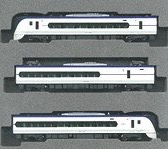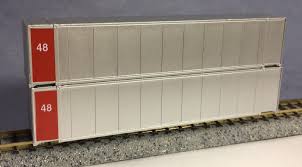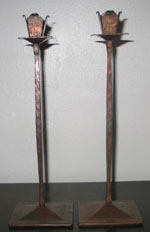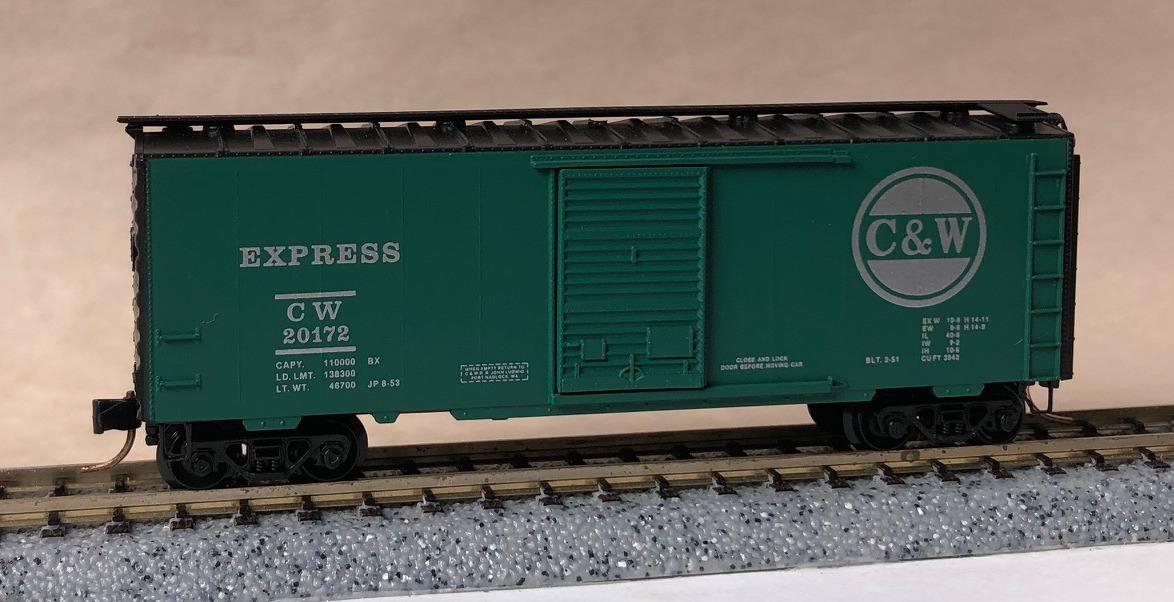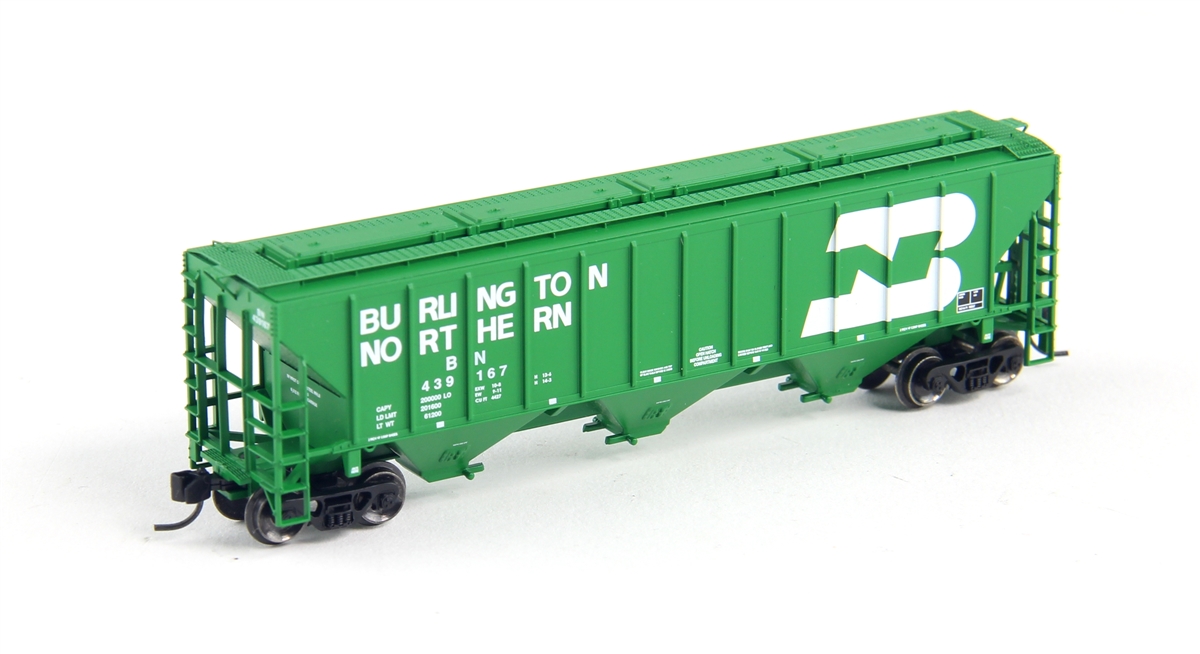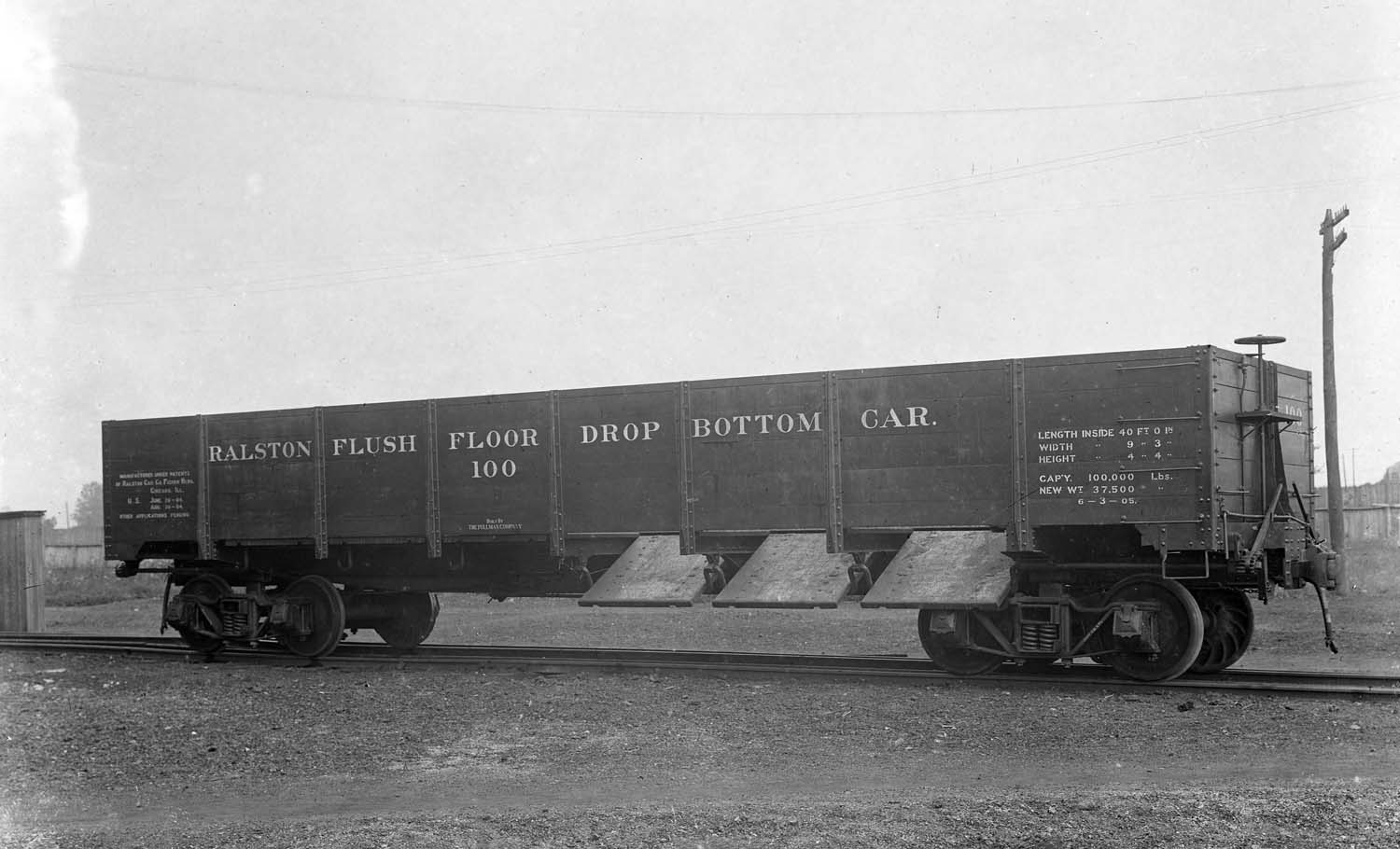Model Information: This model from Trainworx was first introduced in September of 2008. It has some great features such as separately applied ladders, grab irons and brake platform detail. The underframe is exceptionally detailed as is the interior. So much effort was spent on the interior it seems a shame to add a load! These models use Micro-Trains Bettendorf trucks with integrated couplers. It would be nice to see body-mount couplers, but this model seemed to have come out just before body-mount couplers became the norm. Also, the couplers come with standard MTL supplied injection molded wheels, whereas newer high-end models come with metal wheels. These last two comments are not meant as criticisms, but rather serve to illustrate trends in N Scale rolling stock manufacturing.
Prototype History: In US railroad terminology, a gondola is an open-topped rail vehicle used for transporting loose bulk materials. All-steel gondolas date back to the early part of the 20th century. Because of their low side walls gondolas are also suitable for the carriage of such high-density cargoes as steel plates or coils, or of bulky items such as prefabricated sections of rail track.
Drop-bottom gondolas were equipped with dump doors that operated via a mechanism located in the center of the car body. The drop bottom door provided a time-saving unloading method compared to the usual, labor-intensive procedure. Instead of equipping workmen with shovels to muck out the car’s content, the lever system was used to open the doors thus immediately dumping the load on the ground. Various commodities could be carried in the drop bottom gons, but coal loadings were most common. Many coaling towers had elevated trestle style delivery ramps where the drop bottom gondolas would be spotted and workmen could simply open the dump doors to spill the contents into the coal bins. At facilities with the elevator bucket style of coal dock, a ramp was used that led up to an open grate where the coal would spill through and into the lower coal bins. The gons were “tailor made” for company service such as dumping ballast directly onto track roadbed during maintenance, as well as hauling cinders out of various engine service facilities. Handy they were!
Drop-bottom gondolas were equipped with dump doors that operated via a mechanism located in the center of the car body. The drop bottom door provided a time-saving unloading method compared to the usual, labor-intensive procedure. Instead of equipping workmen with shovels to muck out the car’s content, the lever system was used to open the doors thus immediately dumping the load on the ground. Various commodities could be carried in the drop bottom gons, but coal loadings were most common. Many coaling towers had elevated trestle style delivery ramps where the drop bottom gondolas would be spotted and workmen could simply open the dump doors to spill the contents into the coal bins. At facilities with the elevator bucket style of coal dock, a ramp was used that led up to an open grate where the coal would spill through and into the lower coal bins. The gons were “tailor made” for company service such as dumping ballast directly onto track roadbed during maintenance, as well as hauling cinders out of various engine service facilities. Handy they were!
Road Name History: 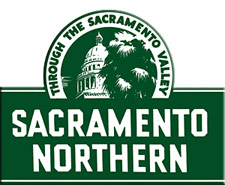 The Sacramento Northern Railway (reporting mark SN) was an 183-mile (295 km) electric interurban railway that connectected Chico in northern California with Oakland via the California capital, Sacramento. In its operation it ran directly on the streets of Oakland, Sacramento, Yuba City, Chico, and Woodland and ran passenger service until 1941 and freight service into the 1960s.
The Sacramento Northern Railway (reporting mark SN) was an 183-mile (295 km) electric interurban railway that connectected Chico in northern California with Oakland via the California capital, Sacramento. In its operation it ran directly on the streets of Oakland, Sacramento, Yuba City, Chico, and Woodland and ran passenger service until 1941 and freight service into the 1960s.
The Sacramento Northern (SN) was an electrified interurban railroad in California that extended 183 miles from Oakland north to Chico. There were two branches, one to Woodland-Colusa, and the other to Oroville. The SN had been two separate interurban companies connecting at Sacramento until 1925. The Oakland, Antioch, and Eastern Railway was a trolley-wire powered line that ran from Oakland through a tunnel in the Oakland hills to Moraga, Walnut Creek, Concord, Pittsburg, to Sacramento. It was renamed the San Francisco-Sacramento Railroad briefly. The Northern Electric Railway was a third-rail powered line that ran from Sacramento north through Marysville-Yuba City to Chico. The train crossed the Sacramento River on the Red Gate Bridge. It was renamed the Sacramento Northern Railroad in 1914. In 1928, the two lines combined to become the Sacramento Northern Railway and came under control of the Western Pacific Railroad which operated it as a separate entity. An extensive multiple-car passenger service operated from Oakland to Chico until 1941 including providing dining car service on some trains. Passenger traffic was heaviest from Sacramento to Oakland. Freight operation using electric locomotives continued into the 1960s. The SN was a typical interurban in that its trains, including freight, ran on downtown city streets in Oakland, Sacramento, Yuba City, and Woodland. This involved multiple car trains making sharp turns at street corners and obeying traffic signals. Once in open country, SN's passenger trains ran at fairly fast speeds. With its shorter route and lower fares, the SN provided strong competition to the Southern Pacific and Western Pacific railroads for passenger business and minor freight business between those two cities. North of Sacramento, rail business was less due to the small town agricultural nature of the region with is small towns and by competition from the SP Railroad.
From Wikipedia

The Sacramento Northern (SN) was an electrified interurban railroad in California that extended 183 miles from Oakland north to Chico. There were two branches, one to Woodland-Colusa, and the other to Oroville. The SN had been two separate interurban companies connecting at Sacramento until 1925. The Oakland, Antioch, and Eastern Railway was a trolley-wire powered line that ran from Oakland through a tunnel in the Oakland hills to Moraga, Walnut Creek, Concord, Pittsburg, to Sacramento. It was renamed the San Francisco-Sacramento Railroad briefly. The Northern Electric Railway was a third-rail powered line that ran from Sacramento north through Marysville-Yuba City to Chico. The train crossed the Sacramento River on the Red Gate Bridge. It was renamed the Sacramento Northern Railroad in 1914. In 1928, the two lines combined to become the Sacramento Northern Railway and came under control of the Western Pacific Railroad which operated it as a separate entity. An extensive multiple-car passenger service operated from Oakland to Chico until 1941 including providing dining car service on some trains. Passenger traffic was heaviest from Sacramento to Oakland. Freight operation using electric locomotives continued into the 1960s. The SN was a typical interurban in that its trains, including freight, ran on downtown city streets in Oakland, Sacramento, Yuba City, and Woodland. This involved multiple car trains making sharp turns at street corners and obeying traffic signals. Once in open country, SN's passenger trains ran at fairly fast speeds. With its shorter route and lower fares, the SN provided strong competition to the Southern Pacific and Western Pacific railroads for passenger business and minor freight business between those two cities. North of Sacramento, rail business was less due to the small town agricultural nature of the region with is small towns and by competition from the SP Railroad.
From Wikipedia
Brand/Importer Information:  Trainworx was founded in 1999 by Pat Sanders and is located in Delta Colorado. Their first freight car was the Quad hopper and it was released in 2000. They have been making N scale products ever since. Their website can be found at www.train-worx.com. As of 2016, they have produced 8 different rolling stock body styles as well as a range of different highway vehicles in N Scale. Their limited edition runs have proven a huge success with collectors and modelers enjoy the accuracy of all their products.
Trainworx was founded in 1999 by Pat Sanders and is located in Delta Colorado. Their first freight car was the Quad hopper and it was released in 2000. They have been making N scale products ever since. Their website can be found at www.train-worx.com. As of 2016, they have produced 8 different rolling stock body styles as well as a range of different highway vehicles in N Scale. Their limited edition runs have proven a huge success with collectors and modelers enjoy the accuracy of all their products.
Trainworx sells their products both through tradional retail channels as well as directly by phone order. When asked "What prompted you to found Trainworx?", Pat Sanders responded "There was a freight car that hadn't been done in N scale that I just had to have and it didn't look like anyone was ever going to make it."

Trainworx sells their products both through tradional retail channels as well as directly by phone order. When asked "What prompted you to found Trainworx?", Pat Sanders responded "There was a freight car that hadn't been done in N scale that I just had to have and it didn't look like anyone was ever going to make it."
Item created by: nscalestation on 2016-04-01 21:56:28. Last edited by gdm on 2021-02-09 17:23:51
If you see errors or missing data in this entry, please feel free to log in and edit it. Anyone with a Gmail account can log in instantly.
If you see errors or missing data in this entry, please feel free to log in and edit it. Anyone with a Gmail account can log in instantly.




